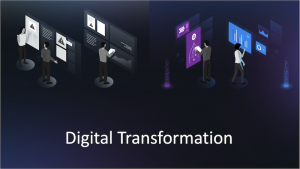Site reliability engineering (SRE) has taken center stage. As companies turn to cloud automation and digital transformation to improve business operations, site reliability engineering has taken center stage
But effective SRE is a team effort. In much the same way that quarterbacks need defensemen and receivers to win football games, site reliability engineers need service-level objectives (SLOs) to measure, manage, and monitor desired outcomes.
But what does this look like in practice? What steps are critical for SREs to deliver objective success with SLOs?
Step 1: Categorize service levels and the data required to measure them
Put simply, SLOs make it possible for SREs to set goals based on meaningful business methods. 75% of SREs say that their organization is now using SLOs to evaluate service levels for applications and infrastructure. But the challenge is effectively categorizing key service levels and the data required to meet them. Here’s why: For many companies, it’s tempting to take the path of least resistance by using currently captured service-level indicators (SLIs) to inform SLOs. The problem is that, while simple, this approach can introduce inaccuracy.
Instead, teams are better served by asking a simple question: What matters most to the business? From there, companies can identify business objectives and service-level agreements (SLAs) that inform effective SLOs. While every business is unique, four common starting-point service-level objectives include the following:
- Availability
- User satisfaction
- Error rates
- Crash rates
Step 2: Consolidate monitoring data into a single source of truth
Siloed departments and data overload pose challenges for the development and deployment of service-based objectives. In fact, 68% of SREs say that siloed teams and multiple tools make it difficult to create a single source of truth — and 99% of SREs say the combination of siloed data, multiple metrics, and complex monitoring tools creates challenges in developing SLOs.
Solving this challenge means consolidating all data and resources required for SLOs into a single observability platform that meets the needs of all stakeholders. This creates a single, sharable source of truth to inform consistency and visibility across service-level measurements. But simply deploying an observability platform isn’t enough in isolation. Businesses should also look for tools that include native SLO capabilities and ensure that all dashboards, error budgets, remediation plans, and alerting mechanisms are agreed upon, tested, and implemented before platforms go live.
Step 3: Correlate performance metrics with user experience
No matter how useful a tool, service, or application, it’s effective only if users use it. As a result, it’s critical to correlate performance metrics with user experience to understand how users interact with key resources, what type of experiences they’re having, and how these experiences affect their behavior.
In practice, this means leveraging key metrics such as availability and engagement. Is the service typically available to users? How often do they interact with the application or service? Meanwhile, when it comes to mobile applications, it’s worth examining metrics such as application adoption rates, app ratings on popular app stores, overall response time, and crash rate volumes on officially supported devices. The correlation of these metrics enables companies to pinpoint potential problems before they negatively impact SLOs.
Consider an increase in crash rates paired with a rapid decline in application ratings. While the correlation doesn’t pinpoint the problem, it sets the stage for teams to start searching for the source.
Step 4: Evaluate SLOs with a precise, data-driven approach
Half of SREs noted that their organizations have little standardized methodology for setting SLO targets and measuring outcomes. As a result, targets may be set too high or too low; exceptionally high targets are almost impossible to hit, while extremely low targets make achievement easy but offer no incentive for improvement.
Here, a data-driven approach to creating and evaluating SLOs makes it possible to find the sweet spot of service-level objective management. This starts with advanced monitoring tools that help guide businesses toward just-right targets based on historical data and existing industry standards. It’s also important to define the goal of for SLOs. For example, 59% of SREs said they use these objectives to push the boundaries for customer experience, while 49% use them to ensure service providers are meeting their objectives, and 42% leverage them to provide IT teams with insight into the impact of their efforts on business objectives.
Finally, it’s important to define SLO ownership. Best-fit ownership depends on the circumstance; while development teams are often tasked with upholding SLOs for non-production applications, SRE teams are often the ideal choice for other environments to ensure objective consistency.
Ready to dig into the details and improve SRE efforts with in-depth SLOs? Read Dynatrace’s 2022 State of SRE Report.





Looking for answers?
Start a new discussion or ask for help in our Q&A forum.
Go to forum